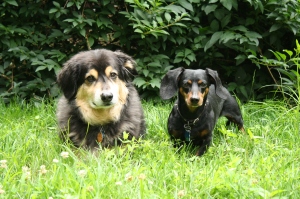Companion Animals or BFFs?
For my entire life I have had pets. In 1st grade my family bought the class rabbit when it was for sale, we named her Thumper. In 3rd grade my father brought home 2 frogs for me, that I named Sam and Chelsea. We adopted snakes and turtles we found in the creek behind our house. My father began collecting fish for his tank: a cat fish, a Jack Dempsey and a red devil fish. Finally, in 6th grade we adopted Louie, a “mystery mutt” from the Washington Animal Rescue League, and soon after we bought Stretch, a mini dachshund, as a brother and companion for Louie to have.
Pet keeping began during the Victorian age. This time period was when people started having more money and less struggles. They were able to spend money for recreational purposes, such as pets. This was when educated people now had time to explore their interests in animals and their capabilities.
So what has changed between then and now? The answer is: A LOT.
Let’s begin by defining the word “pet” and explaining what it means to us:
- A pet is an animal we decide to care of that my not be able to take care of itself.
- A pet is an animal we keep with companionship as the only purpose.
- A pet is an animal we treat as a family member or friend.
- A pet is an animal we have a two-way emotional relationship with.
- A pet is an animal we have ownership over. We consider them our property which we have responsibilities to care for.
Recently these responsibilities have become quite expensive. Let’s take a look at the money Americans have been spending on their pets:
- In 2009 $45.5 billion was spent on pets in the U.S.
- $17.56 billion for food.
- $10.41 billion for medications and medical supplies.
- $12.04 billion on veterinarian costs.
- $2.16 billion on live animal purchases.
- $3.36 billion on grooming and boarding.
Okay, now pick your jaw back up. I know you’re wondering what in the world could cost this much for a pet, not a child, but a pet. Well current trends in today’s pet keeping world have become very humanized. The medicines, surgeries, procedures and food that we spend money on for our pets are a part of the new health care and technologies we are providing for our pets. For example, food companies, such as Nature’s Recipe, are making sophisticated, more human-like, dog food. They add supplements and advertise in ways that will make owners want to buy the food for their pets because it resembles something they themselves might eat.
We can also see the humanization of pets when taking a look at the current trends of traveling with them. There are pet-friendly hotels, that can be easily found with websites such as, petswelcome.com. There are seat belts, strollers, portable beds and bowls to make traveling with your pets easier. There are even “pet destinations” with parks and tours that include your pet.
And it doesn’t stop there. There are now a number of “human” businesses that cater to pets. Gourmet food businesses, taxi services, home improvements stores, clothing stores and restaurants have all been finding ways to cater to pet owners. In addition to this there are now “pet” businesses that resemble “human” businesses. For example, Doggy Daycare and Spa provides a way for your dog to be pampered with exercise, grooming, training classes and excellent boarding services.
As you can see, a lot has changed since the days of the Victorian age. Pets are no long just a symbol of wealth or education. Pets have truly become man’s BFF, deserving of treatment similar to humans. We already buy them clothes, vacations and gourmet food. I don’t know about you, but this leaves me wondering: What comes next?
